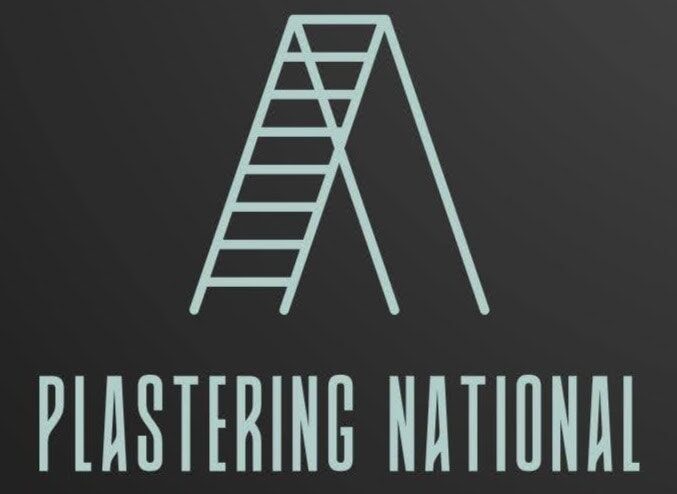Plastering is often considered one of the most essential steps in the construction and renovation process, yet its importance can sometimes be overlooked. Whether you are building a new home, renovating an old one, or simply upgrading your living spaces, plastering plays a critical role in ensuring durability, aesthetic appeal, and functional performance of your walls and ceilings.
In many cases, people tend to skip plastering thinking it may be an unnecessary expense or just an extra task before painting. However, plastering is far from being optional. It provides structural integrity, insulation, and a surface ready for finishing, which directly impacts the long-term performance and appearance of a building. This article delves into the importance of plastering in construction, why plastering is essential for residential , and the many benefits of plastering your walls and ceilings.
Let’s Get Straight To The Point
Plastering is an essential part of building and renovation projects, offering benefits like durability, protection, and aesthetic enhancement. It strengthens walls and ceilings, improves insulation and soundproofing, and provides a smooth surface for painting or decorating. Various types of plaster, including lime, gypsum, cement, and clay, are chosen based on the specific needs of the project. Skipping plastering can compromise structural integrity, aesthetics, and lead to higher repair costs in the long run. While DIY plastering is tempting, hiring a professional ensures quality, efficiency, and long-lasting results. Overall, plastering is crucial for creating a durable, energy-efficient, and beautiful home.
Benefits of Plastering

Plastering is a vital process in building construction and home improvement. The advantages of plastering go beyond just improving the surface appearance of a room.
Durability and Protection
Plastering provides a protective layer for walls and ceilings, making them more resilient to environmental factors. It strengthens surfaces, prevents damage, and guards against wear, moisture, and structural decay. Plastered walls are more durable, ensuring that your home will withstand the test of time with fewer repairs required. This process significantly reduces the frequency of repairs and overall maintenance costs for homeowners.
By applying plaster, you create a long-term protective barrier that extends the lifespan of walls and ceilings, reducing the likelihood of cracks, chips, or water damage.
Aesthetic Enhancement
One of the primary benefits of plastering is the improved aesthetic appeal it brings to a building. Plaster provides a smooth, even finish that is ideal for painting or applying wallpaper. The smooth surface not only enhances the visual appeal but also ensures that decorative finishes adhere properly.
Additionally, plaster can be moulded and shaped into various textures and designs, adding a decorative value to your walls and ceilings. Whether you want a modern smooth finish or more intricate patterns like cornices and archways, plaster offers endless possibilities for customisation.
Improved Insulation and Soundproofing
Plastering plays a significant role in thermal insulation and soundproofing. Plaster’s density helps regulate the temperature inside the home by acting as an insulator. During colder months, it retains heat, and in the warmer months, it keeps interiors cooler. This energy efficiency reduces the need for heating and cooling systems, lowering energy bills and contributing to a greener home.
Moreover, plaster also helps with noise reduction, making your living space quieter and more comfortable. The added soundproofing properties are particularly beneficial in noisy urban environments or for rooms where peace and quiet are desired, such as bedrooms and study areas.
Plastering Types: Choosing the Right Material
Not all plaster is the same. Different types of plastering materials are suited to specific needs, and selecting the right one for your project can make a significant difference in both performance and aesthetics. Below are some of the most common plaster materials used in construction and renovation.
Lime Plaster
Lime plaster is one of the most ancient materials used in building and is still widely preferred for its historic durability and moisture resistance. Its breathability allows walls to remain dry by enabling moisture to escape. Lime plaster also prevents mould growth, making it an ideal choice for areas with high humidity, such as bathrooms and basements.
Lime plaster is eco-friendly, non-toxic, and provides a long-lasting finish, often used in heritage buildings due to its flexibility and longevity.
Gypsum Plaster
Gypsum plaster, made from calcium sulphate, is commonly used for interior walls and ceilings. It is known for its quick-drying properties and smooth finish, making it easy to apply and ideal for creating a flawless surface. Gypsum plaster is also fire-resistant and resistant to mildew, ensuring a safer and more durable wall finish.
Given its rapid setting time, gypsum plaster is perfect for time-sensitive projects where a quick turnaround is necessary.
Cement Plaster
Cement plaster is a strong and durable material that is commonly used for exterior plastering. This plaster is made from a mixture of cement, sand, and water, offering high durability and resistance to the elements. Cement plaster is excellent for harsh weather conditions, providing resilience against moisture, wind, and temperature extremes.
However, cement plaster is less breathable than lime plaster, so it requires careful application to prevent moisture issues inside the walls.
Clay Plaster
Clay plaster is a natural, eco-friendly option that is both non-toxic and sustainable. It is perfect for eco-conscious homeowners and is known for its ability to regulate indoor moisture levels. Clay plaster creates a warm, earthy feel and is ideal for improving indoor air quality.
This type of plaster is particularly beneficial for natural building materials and creating energy-efficient homes.
Plastering and Its Impact on Home Value
One of the key reasons to invest in plastering is the impact it can have on the value of your home. Homes with well-plastered walls tend to have a higher market value compared to those that are not plastered. A smooth, well-finished wall creates a more polished and professional look, which is highly attractive to potential buyers.
Additionally, plastering improves the longevity and durability of the building, ensuring that the walls remain intact and functional for years. The protective properties of plaster also prevent future issues, such as cracks and water damage, which may arise over time in homes that skip the plastering step.
Why Skipping Plastering is a Bad Idea
Though some homeowners might think they can save time and money by skipping the plastering step, the truth is that neglecting plastering can lead to significant long-term problems.
Structural Integrity at Risk
Without plastering, walls and ceilings are exposed to the elements and may deteriorate quickly. Over time, unprotected surfaces can crack, chip, or become susceptible to moisture damage. Plastering ensures that walls are properly reinforced, maintaining the structural integrity of the building.
Compromised Aesthetic Appeal
Walls that are not plastered often look unfinished and can be difficult to paint or decorate. Plastering provides a smooth and uniform surface that is perfect for paint or wallpaper, offering endless decorative possibilities.
Long-Term Financial Costs
By skipping plastering, homeowners may face higher costs in the long run. Without the protective benefits of plaster, walls are more likely to suffer from moisture damage, cracking, and wear. This results in additional repair costs that could have been avoided with proper plastering.
Hiring a Professional Plasterer

For optimal results, it’s always recommended to hire a professional plasterer. Professional plasterers have the expertise and experience to ensure a high-quality, durable finish. They understand the intricacies of applying plaster, choosing the right materials, and preparing surfaces for the best results.
Expertise and Quality Assurance
Professional plasterers are highly skilled in their craft, using the right materials and techniques for a flawless finish. They know how to avoid common mistakes and ensure that the plastering job is done correctly.
Time and Cost Efficiency
While DIY plastering may seem like a way to save money, it often leads to more costs in the long run due to errors and repairs. A professional plasterer can complete the job efficiently, saving you time and money while ensuring a superior finish.
Conclusion
Plastering is not just about aesthetics; it’s a vital part of creating a strong, durable, and energy-efficient home. From enhancing the aesthetic value of your walls to improving insulation, soundproofing, and moisture resistance, plastering offers numerous benefits that cannot be overlooked.
By investing in plastering, whether through DIY or professional services, you ensure the quality and longevity of your home, protecting it from the elements and maintaining its beauty for years to come. So, next time you consider renovating or building, remember: why plastering is necessary is not just a question of appearance—it’s essential for the stability, insulation, and longevity of your home.
Frequently Asked Questions
What Is Plastering?
Plastering is applying a thin layer of a cementitious or lime-based material onto walls, ceilings, or other surfaces to create a smooth, even finish.
What Is The Purpose Of Plastering?
The primary purpose of plastering is to provide a smooth and durable finish to surfaces, enhancing their appearance while offering protection against weathering, moisture, and other environmental factors.
Why Is Plastering Important In Construction?
Plastering plays a crucial role in construction by improving the aesthetics of a building’s interior and exterior surfaces. It also helps to create a uniform base for painting or wallpapering and adds structural integrity to walls and ceilings.
What Are The Benefits Of Plastering?
Plastering offers several benefits, including improved durability, enhanced insulation properties, soundproofing, and fire resistance. It also covers imperfections in the underlying surface and can be easily repaired or modified.
When Is Plastering Necessary?
Plastering is typically necessary when constructing or renovating buildings to achieve a smooth, finished surface. It is commonly used on walls, ceilings, and decorative features such as cornices and mouldings.

